Genetic Advantages: Potential, Challenges, and Real-World Impact
Updated On: November 13, 2025 by Aaron Connolly
Defining Genetic Advantages
Genetic advantages come from certain variations in our DNA that help us survive, reproduce, or just do well in specific environments.
These advantages depend on which genes we get from our parents, how those genes shape our traits, and the patterns they follow across generations.
What Makes an Advantageous Gene?
A gene becomes advantageous when it helps someone survive or have more children in a particular environment.
We can’t really call genes “good” or “bad” on their own—it’s all about the situation.
Environmental Context Matters
The same gene might help in one place but cause trouble elsewhere.
For example, a gene that protects against malaria helps in tropical regions, but it can cause health issues in other places.
Climate, diseases, and food sources change what genes are useful over time.
Natural Selection at Work
Genes that boost survival tend to stick around and become more common.
Organisms with helpful genes have more kids, and their children inherit those genes.
The genetic code in our chromosomes sets the stage for our traits.
Some variations help our immune system fight off disease.
Others help us process certain foods or deal with stress better.
Influence of Genes on Traits
Genes shape a lot of traits that can give us an edge, from resisting disease to physical abilities.
Our chromosomes carry thousands of genes, all working together to make us who we are.
Physical and Health Traits
Some gene variants help us resist common diseases.
HLA genes, for example, help our immune system spot threats.
The FOXO3 gene has versions linked to longer life in different populations.
Certain genes affect physical performance.
Variants of the ACTN3 gene influence muscle fibers, making sprinting or power sports easier for some people.
These differences explain why some folks are just built for certain activities.
Cognitive Abilities
Genes also play a part in how we think.
Research says genetics account for a big chunk of the differences in mental abilities.
The APOE gene, in particular, affects how our minds work as we get older.
Gene Expression Matters
Having “good” genes isn’t everything.
Diet, exercise, and stress change how those genes work.
A great gene can get switched off by a rough environment, while a supportive lifestyle can help less-than-ideal genes do better.
Heritability and Inheritance Patterns
We get genetic advantages from our parents in pretty predictable ways.
These patterns explain why certain traits run in families and how they spread in populations.
Chromosomal Inheritance
We receive 23 chromosomes from each parent, giving us a full set of genetic instructions.
Some advantages come from a single gene, while others need several genes working together.
Types of Inheritance
Some advantages follow dominant patterns—just one copy from either parent is enough.
Others are recessive, so we need a copy from both parents for the benefit to show up.
Population-Level Effects
Genetic diversity in groups gives everyone a better shot at surviving new challenges.
When people have different genetic makeups, some will probably make it through tough times like new diseases.
This diversity is a kind of safety net for our species.
The way we inherit genetic advantages isn’t always simple.
The environment, how genes interact, and plain old luck all play a part in which traits actually show up and help us.
Understanding DNA and Genetic Variation
DNA is basically the blueprint for all life.
It holds the instructions that shape our traits and characteristics.
Random changes in this code create the variety we see in every species.
This diversity is the raw material for adaptation and survival.
Role of DNA in Determining Traits
DNA works like our body’s instruction manual.
It carries thousands of genes that control things like eye color and disease resistance.
Each gene holds info on how to make specific proteins.
Those proteins decide our physical traits and how our bodies function.
We inherit half our DNA from each parent, so everyone gets a unique mix.
The order of DNA bases—A, T, G, and C—decides which proteins get built.
Even tiny changes in the sequence can change how a protein works.
Some traits come from a single gene, like blood type.
Others, like height or skin color, involve many genes working together.
Our DNA also affects how we react to medicine.
Two people might have completely different reactions to the same drug because of their genes.
Environmental factors matter too.
Genes give us potential, but things like diet and exercise decide how that potential plays out.
Genetic Mutations and Diversity
Mutations are just random changes in our DNA.
They happen naturally when cells divide or when DNA gets damaged.
Most mutations don’t do much.
Some are harmful, but others give us advantages that help us survive.
These changes create diversity in human populations.
Without mutations, we’d all be clones.
On average, about 100 new mutations show up in each person every generation.
That sounds wild, but most DNA doesn’t even code for anything important.
| Mutation Type | Effect | Example |
|---|---|---|
| Silent | No change | Same protein produced |
| Beneficial | Advantage | Disease resistance |
| Harmful | Disadvantage | Genetic disorders |
| Neutral | No impact | Non-coding DNA changes |
Different populations have developed unique gene variations over thousands of years.
That explains why some groups resist certain diseases better than others.
Gene flow spreads helpful mutations between populations.
When people move and have children with others from different backgrounds, good genes get shared.
Genetic Advantages and Health Outcomes
Genetic advantages can stop serious diseases before they start.
They also help protect us from common health problems over our lives.
These benefits often lead to longer, healthier lives.
Prevention of Genetic Disorders
Early detection through genetic testing lets us spot risks for genetic disorders before symptoms show up.
Doctors can start treatment sooner or even prevent issues altogether.
For rare diseases, genetic advantages can mean someone never develops a condition, even if their family has a history of it.
Some people carry protective gene variants that keep them healthy when others in the family get sick.
Genetic counseling helps families figure out their risks.
Couples can learn if they’re likely to pass on genetic disorders to their kids.
This knowledge helps them make better choices about having children.
Key prevention benefits include:
- Earlier diagnosis and treatment
- Better family planning choices
- Targeted screening programs
- Personalised prevention strategies
Protection Against Diseases
Some genetic variants protect us from common diseases like heart disease.
People with these genes often have lower cholesterol or better blood pressure control.
Proteins made by helpful genes fight infections more effectively.
Some gene advantages help our immune system spot and destroy bacteria or viruses faster.
Here’s what research shows:
| Disease Type | Genetic Protection |
|---|---|
| Heart disease | Better cholesterol processing |
| Diabetes | Improved insulin response |
| Cancer | Enhanced DNA repair |
| Infections | Stronger immune responses |
A lot of these protections work quietly, and most people never even realize they have them.
Impacts on Lifespan and Well-being
People with genetic advantages tend to live longer and stay healthier.
Their bodies might age slower or resist age-related diseases better.
Mental health can benefit too.
Some gene variants lower the risk of depression, anxiety, or memory loss as we get older.
Physical performance and recovery also improve with certain genetic traits.
Athletes with specific genes might build muscle faster or recover from workouts more quickly.
Quality of life perks include:
- More energy throughout life
- Needing fewer medications
- Lower healthcare costs
- Staying independent as they age
These small benefits add up, making a real difference over a lifetime.
Genetic Testing and Identification of Advantages
Modern genetic testing can reveal inherited traits that offer health benefits or enhanced abilities.
These tests look at DNA, chromosomes, and proteins to spot helpful genetic variations that can guide medical and lifestyle choices.
Types of Genetic Testing
We have several ways to test for advantageous traits.
Molecular testing checks for small DNA changes that might mean you have a protective variant.
This method looks for specific mutations that lower disease risk or boost certain abilities.
Biochemical testing measures proteins made by genes.
Some people make more of certain protective proteins or enzymes, which can help break down toxins or fight disease.
Cytogenetic testing looks at whole chromosomes for structural advantages.
Some chromosome arrangements can protect against specific conditions or boost cognitive function.
Newborn screening is the most common genetic test out there.
Almost every baby in the UK gets screened for genetic conditions.
This early check can spot both risks and advantages that shape future treatment.
Carrier testing helps find beneficial recessive traits.
While it’s designed to detect disease carriers, sometimes it uncovers gene variants that lower cancer risk or boost immunity.
Prenatal and Predictive Tests
Prenatal testing (like amniocentesis or chorionic villus sampling) can pick up beneficial genetic traits before birth.
These tests look at fetal DNA for mutations that might help with development or disease resistance.
Predictive genetic testing can find genetic advantages before any symptoms show up.
People with a family history of certain diseases can discover protective variants that lower their risk.
This info gives peace of mind if they don’t have harmful mutations.
Some predictive tests highlight genes for faster metabolism.
These variants help some people process medications or break down fats and carbs more efficiently.
Pharmacogenetic testing checks how genes affect drug responses.
Certain gene variants let people handle medications better or avoid side effects.
Doctors use this info to pick the best treatments.
Blood and saliva tests can spot protective variants in cancer-related genes.
Most genetic tests focus on harmful mutations, but some people actually have variants that reduce cancer risk or improve DNA repair.
Applications of Genetic Markers
Genetic markers help us find specific advantages in different body systems.
APOE variants can point to better heart health and lower dementia risk.
The APOE2 variant, for instance, offers some protection against Alzheimer’s disease.
CCR5 mutations give natural resistance to HIV.
People with certain CCR5 variants have stronger immune responses to viral infections.
These markers are important for medical treatments and prevention.
Athletic performance markers show genetic advantages in muscle type and oxygen use.
Variants of the ACTN3 gene point to fast-twitch muscle benefits for explosive sports.
Longevity markers help spot gene variants linked to healthy aging.
People with certain versions of genes like FOXO3 tend to live longer and stay healthier as they age.
Lactase persistence genes let adults keep digesting milk.
This advantage allows some populations to get nutrition from dairy their whole lives.
Genetic testing labs now offer panels that check hundreds of markers at once.
These reports give a detailed look at inherited advantages across many health areas.
Notable Genetic Disorders: Case Studies
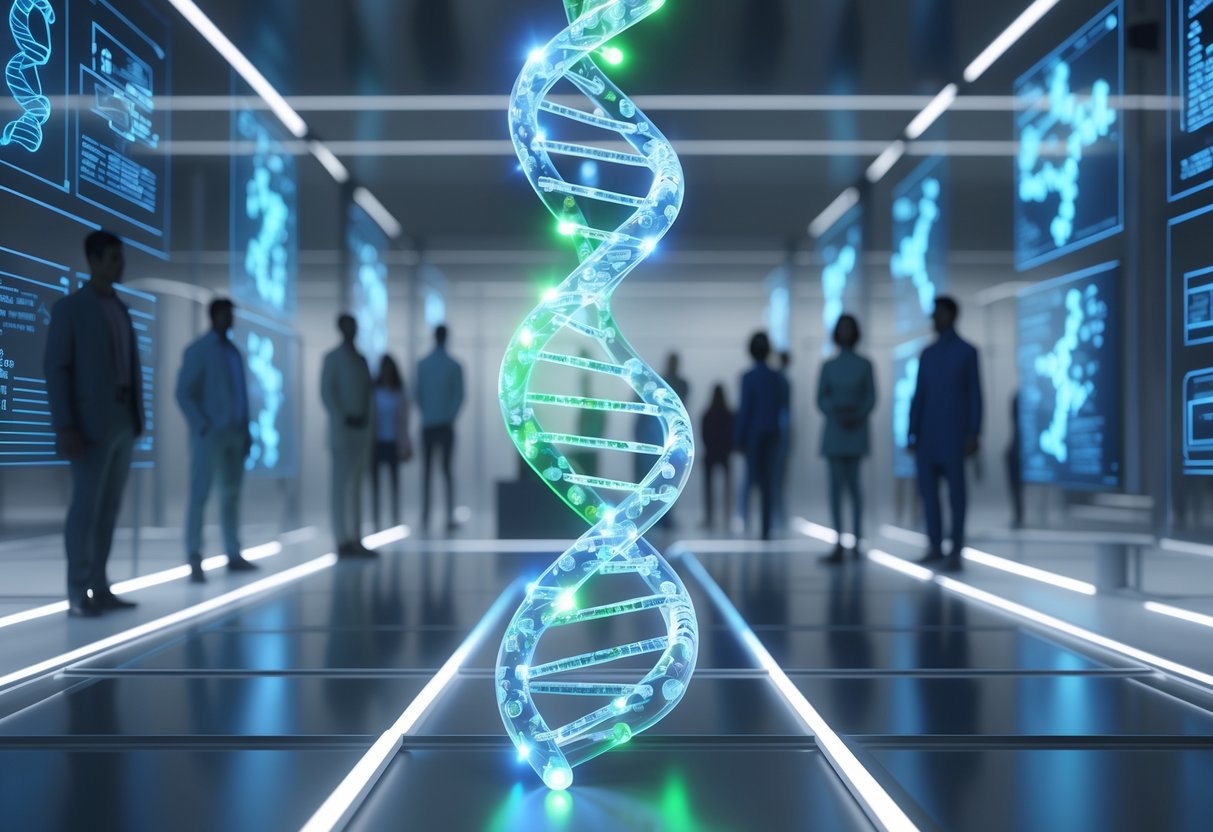
These genetic conditions show how a single gene change can cause serious health problems, but sometimes also offer unexpected protection against other diseases.
Each disorder affects thousands of people worldwide and teaches us a lot about genetics.
Cystic Fibrosis
About 1 in 2,500 babies born in the UK have cystic fibrosis. Kids get it when they inherit two faulty copies of the CFTR gene.
The condition leads to thick, sticky mucus clogging up the lungs and digestive system. People with cystic fibrosis struggle with breathing and get lung infections a lot.
Main symptoms include:
- Persistent coughing
- Frequent chest infections
- Poor weight gain
- Salty-tasting skin
Here’s something odd—carriers with just one faulty gene don’t get sick at all. Instead, they actually have some protection against nasty diarrhoea diseases like cholera.
That benefit might explain why the gene sticks around in certain populations. In places where those diseases were deadly, carriers had a survival advantage.
These days, people with cystic fibrosis can live much longer than before. Newer treatments help thin out the mucus and tackle infections.
Some folks now reach their 40s or 50s, which would’ve been unthinkable a few decades ago.
Sickle Cell Anaemia
Sickle cell anaemia starts with changes in the gene that makes haemoglobin. Haemoglobin carries oxygen inside red blood cells.
When someone has two copies of the sickle cell gene, their red blood cells turn into crescent or sickle shapes instead of staying round.
These sickled cells cause big problems:
- They block blood flow in small vessels
- They break down easily, causing anaemia
- They trigger painful crises
- They can damage organs over time
People with just one copy of the gene have sickle cell trait. They rarely get symptoms, but their blood cells resist malaria.
This resistance is a huge deal in regions where malaria kills many. In some parts of Africa, up to 40% of people carry one copy of the sickle cell gene.
Key statistics:
- Affects 1 in 500 African Americans
- Protects against malaria in carriers
- Life expectancy now ranges from 40 to 60 years
Muscular Dystrophy
Muscular dystrophy covers over 30 different genetic conditions. All of them slowly weaken and break down muscles.
Duchenne muscular dystrophy is the most common type in children. About 1 in 3,500 boys worldwide have it. Faulty changes in the dystrophin gene on the X chromosome cause the condition.
Boys usually start showing symptoms by age 5. They struggle with walking, climbing stairs, and getting up off the floor.
Progression timeline:
- Ages 2-5: First symptoms show up
- Ages 8-12: Many kids need wheelchairs
- Teens: Heart and breathing problems begin
- Early adulthood: Complications can become life-threatening
The gene is massive, so it mutates easily. Most cases actually come from new mutations, not family inheritance.
Some types progress more slowly. People with Becker muscular dystrophy might walk into their 40s or 50s.
Researchers are making progress fast. Gene therapy trials are starting to show real promise for some forms.
ALS (Amyotrophic Lateral Sclerosis)
ALS hits the nerve cells that control muscles. Around 90% of cases appear randomly, while 10% run in families.
It usually starts between ages 40 and 70. Each year, about 2 in 100,000 people in the UK get diagnosed.
Early warning signs:
- Muscle weakness in hands or feet
- Slurred speech
- Trouble swallowing
- Muscle cramps and twitching
Most people with ALS live 2 to 5 years after diagnosis. Some, like Stephen Hawking, beat those odds and live much longer.
Scientists have identified over 25 genes tied to ALS. The most common are C9orf72, SOD1, and TARDBP.
Family members can get genetic testing if ALS runs in the family. This helps with planning and early monitoring.
Some ALS gene changes might offer protection against other diseases. Researchers are still sorting out whether ALS genes affect cancer risk or brain ageing.
Modern Genetic Engineering and Gene Editing
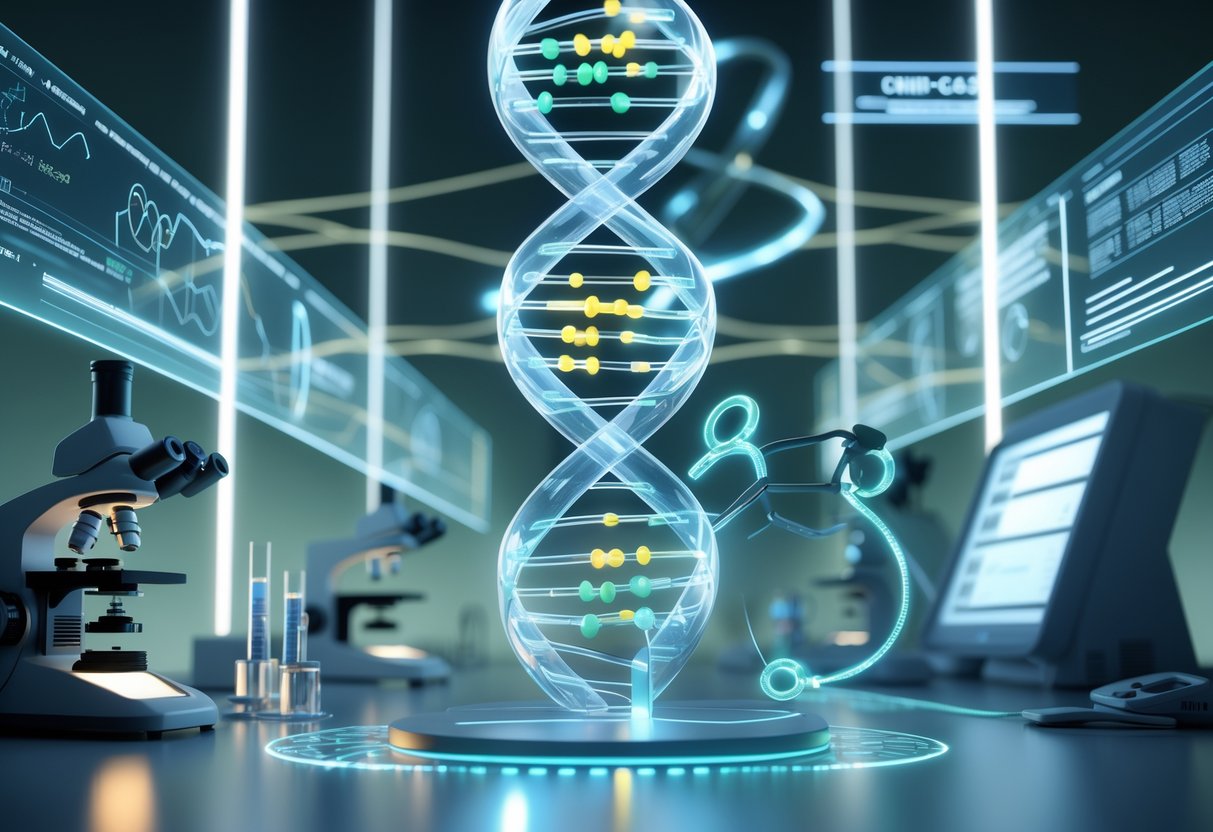
Modern genetic engineering has completely changed how we tackle disease prevention and treatment. Scientists now use CRISPR-Cas9 to make precise DNA changes with impressive accuracy.
Principles of Genetic Engineering
Genetic engineering changes the genetic code inside cells. Scientists add, remove, or tweak DNA to fix problems or improve traits.
The process starts by pinpointing the target gene. Researchers track down the exact DNA sequence they want to change. Sometimes it’s a disease gene, other times it’s one that could prevent illness.
Key techniques include:
- Gene insertion – adding new genetic material
- Gene deletion – removing harmful sequences
- Gene modification – changing existing genetic code
Scientists use vectors—special tools that carry genetic material into cells. Vectors act like delivery trucks, bringing new DNA to the right spot.
The changes can target different cell types. Somatic cell editing affects only the treated person. Germline editing changes genes that pass to future generations.
Safety protocols aim for precise targeting. Modern techniques really cut down on unwanted changes elsewhere in the genome.
CRISPR and CRISPR-Cas9 Technology
CRISPR-Cas9 made gene editing faster and more accurate than ever. The system works like molecular scissors, snipping DNA at specific spots.
CRISPR stands for Clustered Regularly Interspaced Short Palindromic Repeats. Bacteria use it to fight off viruses.
The process has three main steps:
- Guide RNA finds the target DNA
- Cas9 protein cuts the DNA at the chosen spot
- Repair mechanisms fix or swap out the genetic code
This tech can treat genetic diseases like sickle cell by changing just a single base. Researchers even modify T-cells with CRISPR so they can hunt down cancer cells.
CRISPR also speeds up drug discovery. Pharma companies use it to test new treatments and figure out how diseases work.
It costs less than older methods, making genetic treatments more accessible for research and therapy.
Gene Therapy: Benefits and Limitations
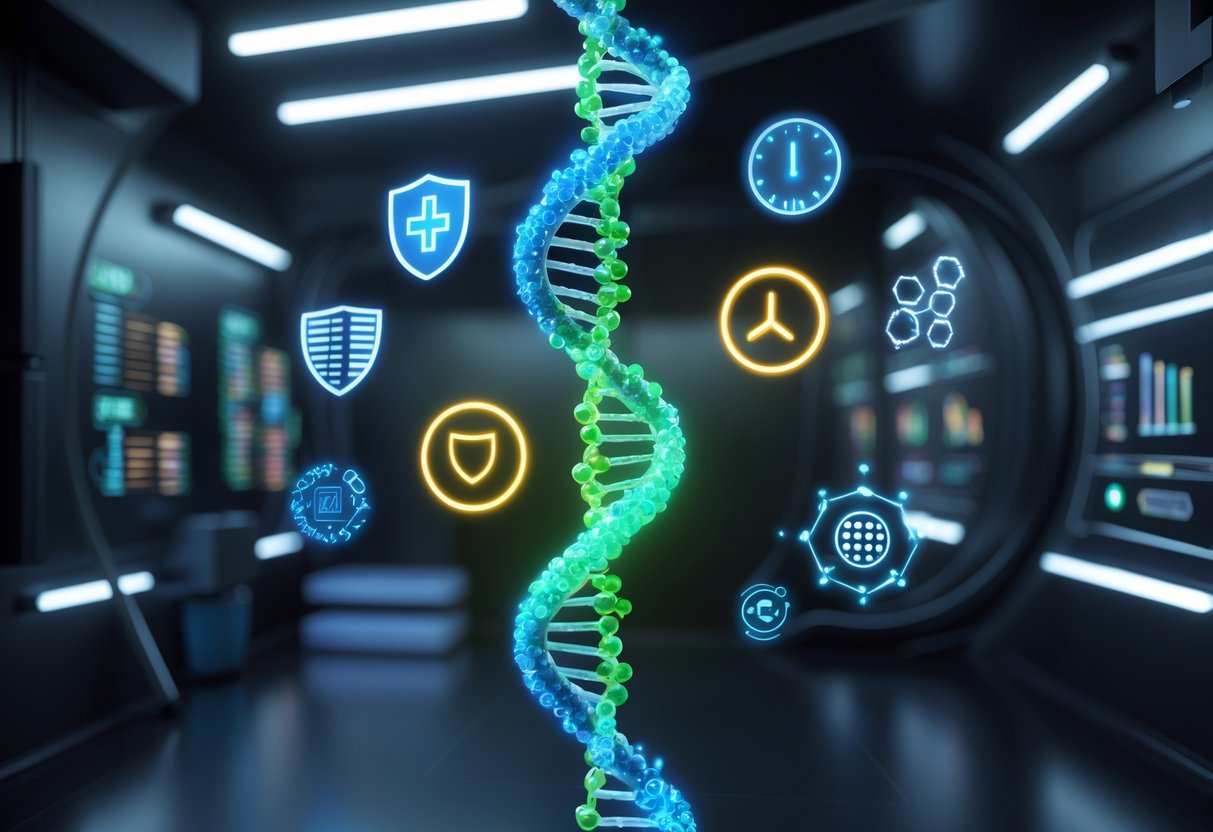
Gene therapy tries to fix faulty genes by swapping them for healthy ones or adding new genes to fight disease. This targeted approach can treat conditions right at their source, offering treatments tailored to each person’s unique genetics.
How Gene Therapy Works
Gene therapy delivers healthy genes into cells to fix genetic problems. Scientists use carriers called vectors to get these genes to the right places.
Viruses are the most common vectors. They naturally invade cells and insert genetic material. Scientists remove the dangerous parts and replace them with helpful genes.
Other delivery methods exist too:
- Liposomes: Fatty bubbles that sneak genes through cell walls
- Electroporation: Electric pulses open up cell membranes
- Direct injection: Genes go straight into tissues
The new genes might replace a missing one, fix a broken one, or add instructions to help cells fight disease. Some treatments focus on blood cells, others on organs like the lungs or liver.
Targeted Treatments for Disease
Gene therapy goes after specific diseases at their genetic roots. It works best for conditions caused by single gene defects.
Blood disorders have seen the most success. Treatments for sickle cell and thalassemia help patients avoid constant transfusions. Some now make healthy red blood cells after gene therapy.
Immune deficiencies respond well too. Kids born without working immune systems can get treatments that restore their defences. These therapies have saved lives in trials.
Cancer treatments use gene therapy to boost the immune system. CAR-T cell therapy takes a patient’s immune cells, tweaks them to recognise cancer, and puts them back. This works especially well for certain blood cancers.
Inherited blindness can sometimes be treated with gene therapy injected into the eye. Some patients have regained vision after losing it to genetic defects.
Personalised Medicine in Practice
Gene therapy makes treatments more personal. Doctors can tailor therapies to each person’s genes and disease features.
Genetic testing comes first. Doctors check a patient’s DNA to see which genes are causing trouble. This helps pick the best type of gene therapy.
Custom vectors come next. Scientists choose the delivery method based on which cells need fixing. Lung diseases need different vectors than blood disorders.
Dosing is personal. Age, weight, and disease severity matter when deciding how much genetic material to use. Doctors watch how patients respond and adjust as needed.
Still, limitations are real. Gene therapy can cost hundreds of thousands of pounds per patient. Side effects include immune reactions to vectors and accidental genetic changes. Some treatments wear off, so patients need repeated doses.
Manufacturing is tough too. Each treatment needs special facilities and skilled staff, and not many hospitals can offer that.
Ethical and Societal Considerations

Gene editing brings huge medical promise, but it also stirs up tough questions about fairness, discrimination, and safety. These issues shape how we set policies and decide who gets access to these powerful tools.
Potential for Genetic Discrimination
Genetic discrimination happens when people get treated unfairly because of their genetic info. This sparks real worries about privacy and equal chances.
Insurance companies could deny coverage or hike premiums for people with risky genes. Some employers might even avoid hiring folks with certain genetic profiles.
Protections depend on where you live:
- UK: The Genetic Information Non-discrimination Act covers some situations
- EU: Data protection laws give limited genetic privacy
- US: The Genetic Information Nondiscrimination Act protects jobs and health insurance
Direct-to-consumer genetic tests make things trickier. More people have genetic data that could fall into the wrong hands.
Discrimination risks include:
- Health insurance denials
- Job bias
- Education hurdles
- Social stigma
We need better laws to protect genetic privacy. Without strong safeguards, genetic advantages could turn into tools for exclusion.
Ethical Dilemmas in Genetics
Germline editing brings the toughest ethical questions, since changes pass to future generations. We’re in new territory here.
One big debate is enhancement vs. treatment. Editing genes to cure disease feels okay to most people. But using it for “designer babies” with special traits? That gets heated fast.
Religious and cultural objections come up often:
- Playing God or messing with nature
- Changing what makes us human
- Giving unfair advantages to the wealthy
Informed consent is tricky with genetic changes. Future generations can’t agree to modifications made before they’re born.
Access and fairness are big concerns. If gene therapies cost a fortune, only rich families benefit. That could widen the gap between social classes.
Different cultures see genetic modification differently. What’s fine in one place could be totally off-limits somewhere else.
Balancing Safety and Progress
Safety worries have to be balanced against medical progress. Gene editing can cause unexpected genetic changes that might not show up for years.
Current rules require lots of testing before human trials. Some researchers think too many restrictions could slow down life-saving breakthroughs.
Regulations differ worldwide:
- Some countries ban germline editing
- Others allow limited research with strict oversight
- A few have almost no restrictions
Risk assessment looks at several things:
- Off-target effects
- Long-term health risks
- Impact on future generations
- Psychological effects on patients
There’s also the issue of dual-use. The same tech that cures diseases could be misused to create biological weapons.
International cooperation is a must, since research crosses borders. Without global standards, work just shifts to countries with looser rules.
It’s a tough balance—move forward, but don’t rush. We need solid safety measures that protect people and still let good research happen.
Influence of Genetic Advantages Beyond Health
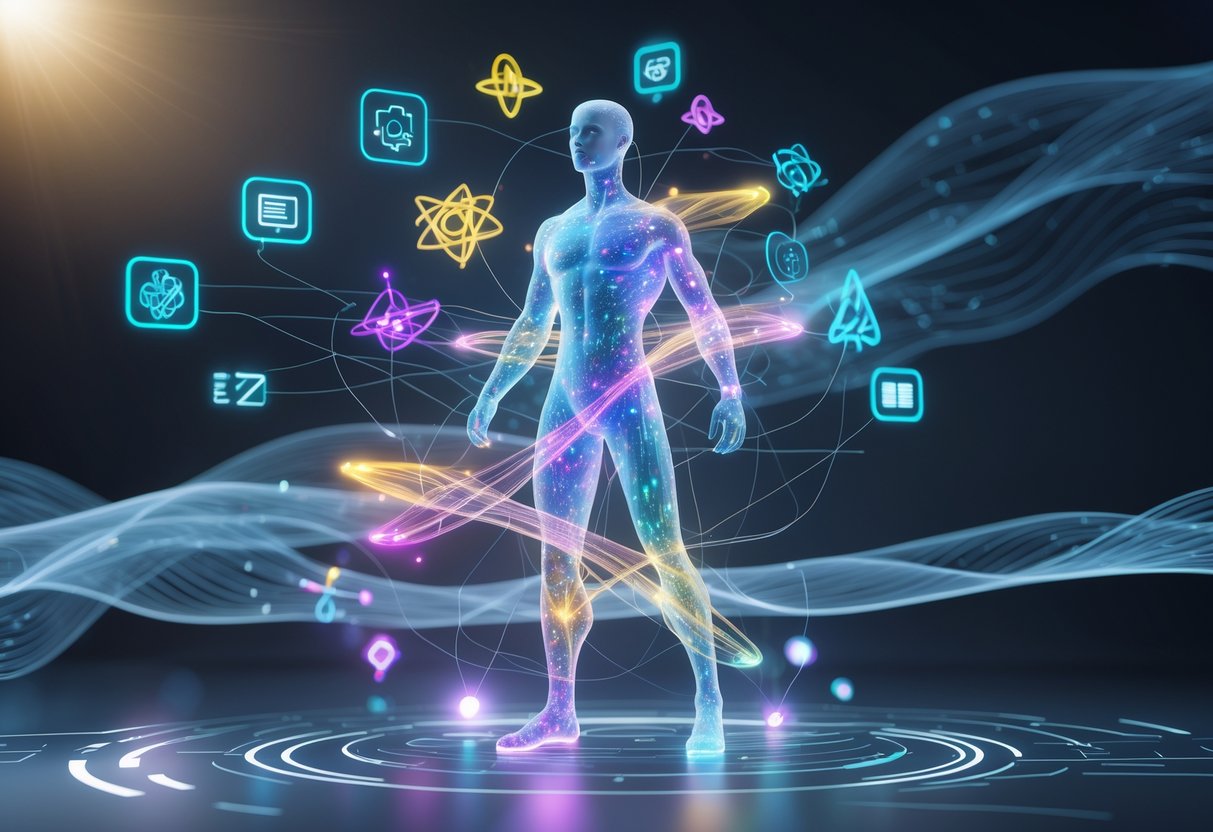
Genetic advantages reach way beyond disease resistance or how long we live. They shape our bodies, our cognitive abilities, and even influence whole populations. These differences also reveal ancestral patterns that help scientists trace human evolution and migration.
Physical Performance and Cognitive Ability
Our genes shape both athletic performance and mental abilities in big ways.
The ACTN3 gene affects muscle fibres. Certain variants build more fast-twitch muscles, perfect for sprinting and power sports.
Elite athletes usually have specific genetic variants that give them a real edge.
Research connects genes to endurance, strength, and power in clear, measurable ways.
Cognitive abilities have strong genetic roots too.
Studies estimate that genes explain much of the difference in intelligence between people.
The APOE gene influences how our brains work, especially as we get older.
Some people with particular variants keep sharper thinking skills well into old age.
But genes don’t decide everything.
Training, education, and lifestyle can boost or limit whatever genetic hand you’re dealt.
Quick win: If you know your genetic predispositions, you can pick sports or activities that fit your natural strengths.
Ancestry and Population Genetics
Different populations have unique genetic advantages shaped by their ancestors’ environments.
For example, Arctic populations evolved genes to process high-fat diets better.
Genetic diversity inside populations helps them survive new diseases or environmental changes.
When a group has a mix of genetic traits, it’s better prepared for surprises.
The Human Leukocyte Antigen (HLA) system changes a lot between ethnic groups.
This difference lets populations resist infections based on what diseases they’ve faced before.
Some advantages only show up in certain populations.
People in Tibet and the Andes developed different genes for living at high altitudes with less oxygen.
Warning: Genetic rescue programs can restore fitness by mixing populations, but sometimes chromosome differences cause compatibility problems.
Population genetics helps researchers make targeted treatments and trace how humans migrated over time.
Genetic Advantages in Food Production
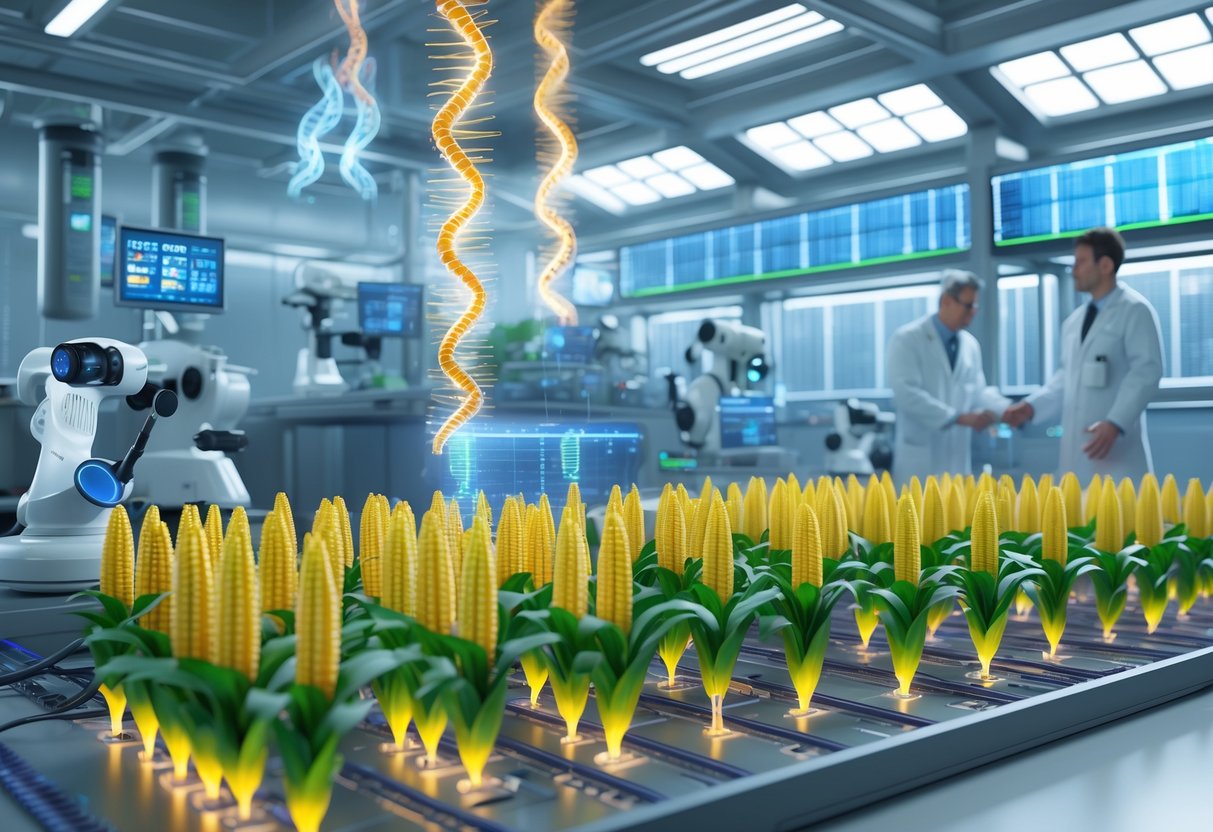
Scientists now use genetic tools to change crop DNA.
They make plants stronger and more productive.
These tweaks mean farmers grow more food, use fewer chemicals, and protect crops from disease.
Genetic Modification in Crops
We can change plant genes to make crops better for farming.
Scientists take useful genes from one plant and add them to another.
This creates crops that survive tough weather or fight off pests.
The most common changes help crops resist insects or tolerate herbicides.
For example, cotton plants now carry genes that make them toxic to harmful bugs.
Soybeans can survive weedkillers that would usually kill them.
Common genetic modifications include:
- Insect resistance (Bt genes)
- Herbicide tolerance
- Disease resistance
- Better nutrition
Some crops now grow in salty soil or survive drought.
These traits help farmers in tough climates succeed.
Modern tools like CRISPR let us edit plant genes precisely.
Instead of adding foreign DNA, CRISPR tweaks existing genes.
This speeds things up compared to traditional breeding.
Increasing Yield and Disease Resistance
Genetically modified crops yield about 22% more than regular ones.
This boost means more food from the same land.
Farmers also use 37% fewer chemicals, since the plants fight pests themselves.
Disease-resistant crops protect whole harvests.
In Hawaii, papaya plants survived a deadly virus after scientists added resistance genes.
Without that, the papaya industry there would’ve disappeared.
Key benefits for farmers:
- Higher yields
- Lower pesticide costs
- Fewer crop losses
- Better profits
GM crops help farmers in developing countries too.
In India, cotton farmers earn more because their crops survive insect attacks.
That means steadier food production worldwide.
Drought-resistant crops keep growing when rain is scarce.
These plants help farmers avoid disaster during dry seasons.
With climate change, these traits are becoming essential for global food security.
Future Directions and Research Trends
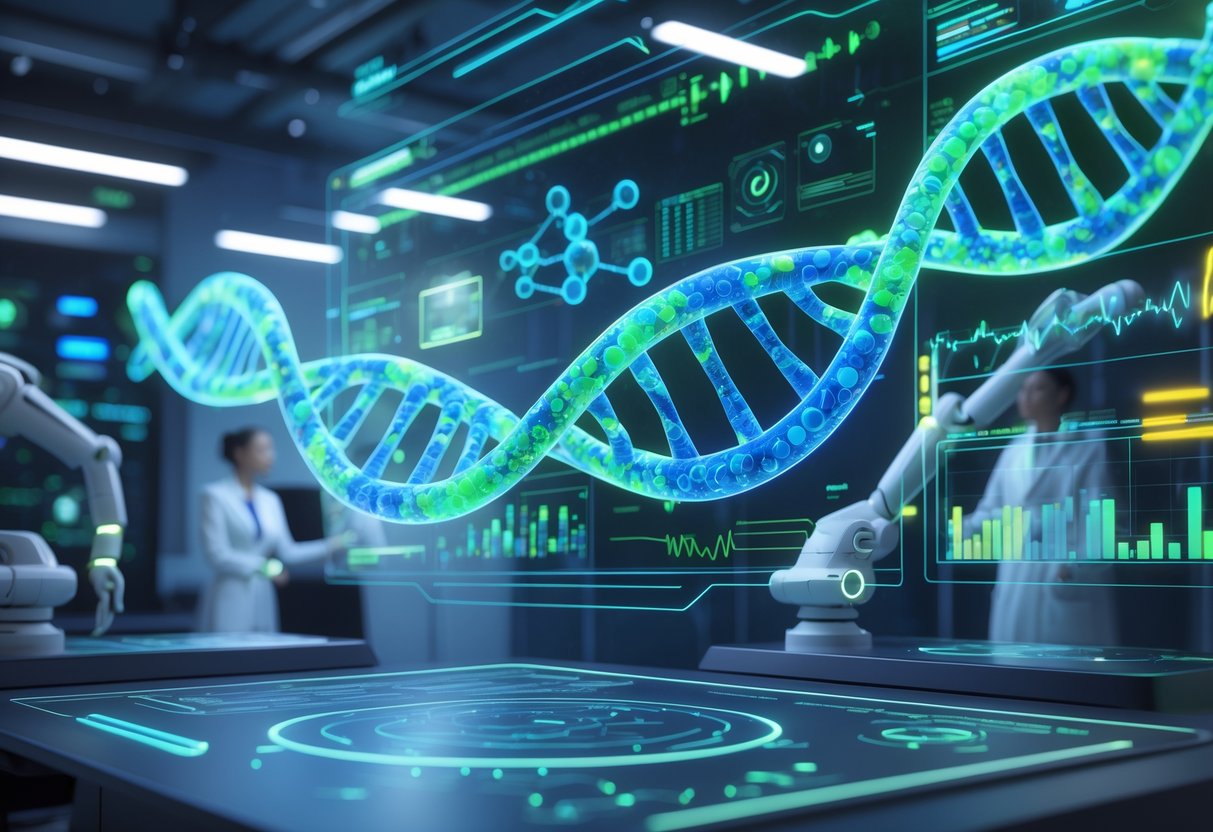
Gene editing tools like CRISPR keep evolving.
New approaches are tackling genetic puzzles that once seemed impossible.
These advances help us understand DNA and fix problems at their source.
Emerging Technologies in Genetics
Prime editing goes beyond CRISPR-Cas9.
It makes precise DNA changes without breaking both strands.
That means up to 95% fewer unwanted mutations than older tools.
Base editing lets scientists swap single DNA letters.
Since many diseases come from tiny mistakes in DNA, this technique acts like a molecular eraser.
Artificial intelligence now predicts which genes cause diseases.
Machine learning sorts through millions of genetic patterns in minutes and finds links people might never spot.
Synthetic biology builds new biological systems from scratch.
Scientists design genetic circuits that work like computer programs.
These circuits can make medicines, fuels, or new materials inside cells.
Multi-omics blends data from DNA, RNA, proteins, and metabolism.
This approach gives a fuller picture of how genes actually work.
Addressing Challenges in Genomic Science
Ethical frameworks are growing alongside the tech.
We need clear rules for editing human embryos and protecting genetic privacy.
Different countries set their own boundaries here.
Data storage is a huge issue.
One human genome creates about 200 gigabytes of data.
Handling millions of genomes takes powerful new computer systems.
Cost reduction is still a big goal.
Sequencing a whole genome now costs under £800, down from £2.3 billion in 2003.
Researchers want to drive that number down to £80 per genome.
Genetic diversity research is finally reaching beyond Europe.
Most genetic studies used to focus on people of European ancestry.
Now, scientists are working to include more diverse groups for better treatments.
Regulatory adaptation struggles to keep up with new tech.
Old laws weren’t built for today’s genetic tools.
Governments are racing to update rules and balance innovation with safety.
Frequently Asked Questions
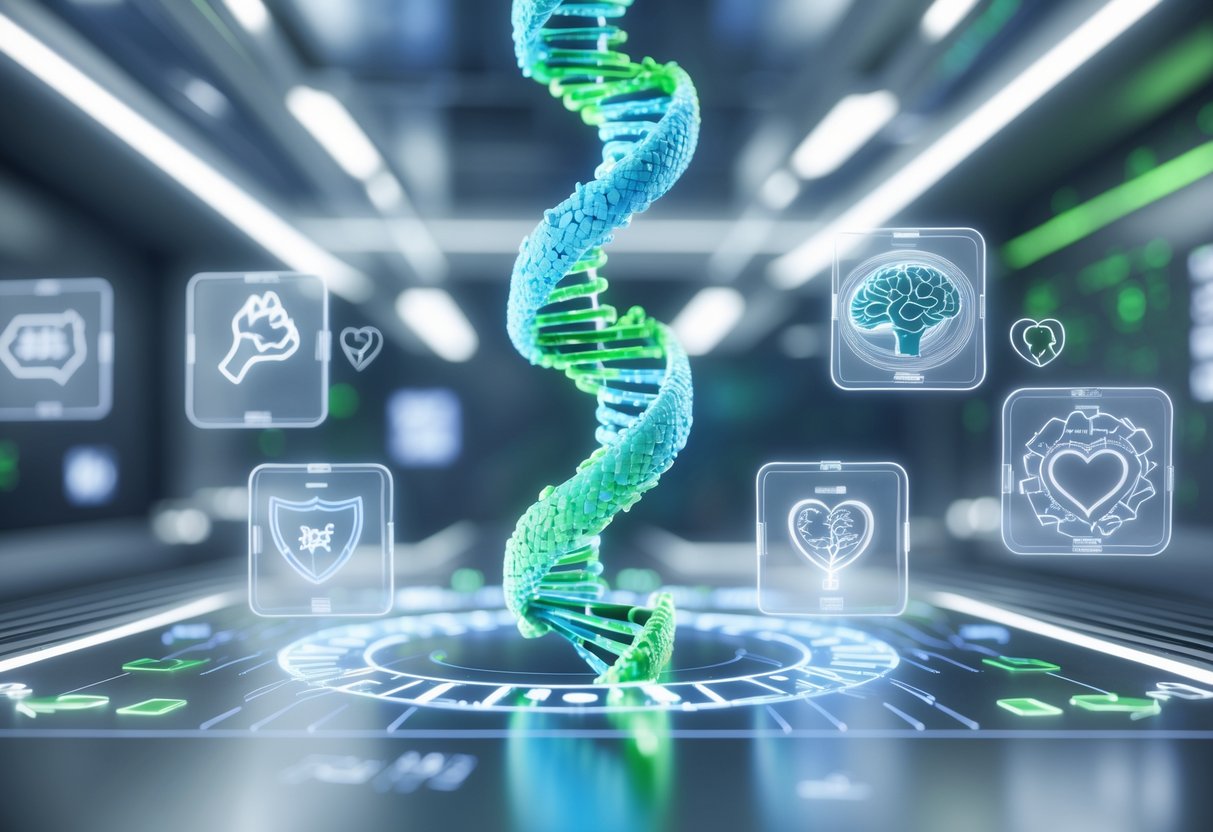
Genetics touches everything—from how fast we run to how our bodies handle medicine.
Here are some common questions about how genetic advantages play out in real life.
What examples demonstrate the influence of genetics on athletic performance?
Elite sprinters often have the ACTN3 gene variant, sometimes called the “speed gene.”
This gene makes a protein that helps fast-twitch muscle fibers work better.
Distance runners usually carry gene variations that help deliver more oxygen to muscles.
The ACE gene variant lets the body use oxygen more efficiently during long runs.
East African marathoners have genetic advantages in muscle fiber type and metabolism.
Their genes help them burn fat more efficiently during endurance events.
Some swimmers are born with longer torsos or bigger lung capacity, thanks to their genes.
These traits give them a real edge in the water.
Could you shed light on the evidence supporting the significance of genetics in human traits?
Twin studies show that genetics explain about 80% of height differences.
The rest comes from environment and nutrition.
Eye color is almost all genetic.
Brown eyes dominate, while blue and green eyes come from recessive variants.
Intelligence has a genetic component of about 50-80% in adults.
Education, environment, and life experiences fill in the rest.
Personality traits like extroversion and conscientiousness get a moderate push from genetics.
Researchers say genes account for 40-60% of these characteristics.
May I know the main ideas that underpin the role of genetics in human health?
Everyone gets two copies of each gene—one from each parent.
These genes tell our cells how to work and grow.
Genetic mutations can raise disease risk, but they don’t guarantee you’ll get sick.
Lifestyle and environment matter a lot too.
Some diseases, like sickle cell anemia, come from a single gene mutation.
Most common conditions, like diabetes, involve multiple genes plus lifestyle factors.
Family health history helps predict risk, since relatives share genes.
Healthcare providers use this info to recommend screenings and treatments.
How do genetics contribute to human diversity and individual characteristics?
Genes mix in millions of ways between parents and kids.
That’s why even siblings can be so different.
Populations developed unique genetic adaptations over thousands of years.
These changes affect things like skin color, metabolism, and disease resistance.
Genetic diversity among humans is actually pretty small.
We all share about 99.9% of our DNA.
Random mutations pop up in every generation.
Most don’t matter, but some create new traits and make us unique.
How is our understanding of heredity crucial for personalised medicine and healthcare?
Genetic testing can reveal if someone carries gene variants that affect how they process medicines.
Doctors use this info to choose the best drugs and dosages for each patient.
Some people break down certain medications much faster or slower because of their genetics.
Cancer treatments now often match the genetic profile of tumors.
Different mutations respond best to specific therapies.
Genetic counselors help families understand their risk for inherited conditions.
They walk people through test results and talk about options for prevention or early action.
What are the key implications of genetic research on our everyday lives?
Genetic research keeps opening doors to new treatments for diseases that once seemed hopeless. Scientists are now using gene therapy to try and fix faulty genes that make people sick.
Farmers and researchers have worked together to create crops that naturally fight off diseases and pests. This means we can use fewer chemical pesticides, which might make our food supply a bit more secure.
People are turning to genetic ancestry tests more than ever, hoping to learn about where they come from. Sometimes, these tests even help folks connect with distant family or discover surprising bits of their heritage.
In forensic science, DNA analysis has become a powerful tool for solving crimes. Investigators can use even tiny bits of biological evidence to identify victims or catch suspects.

